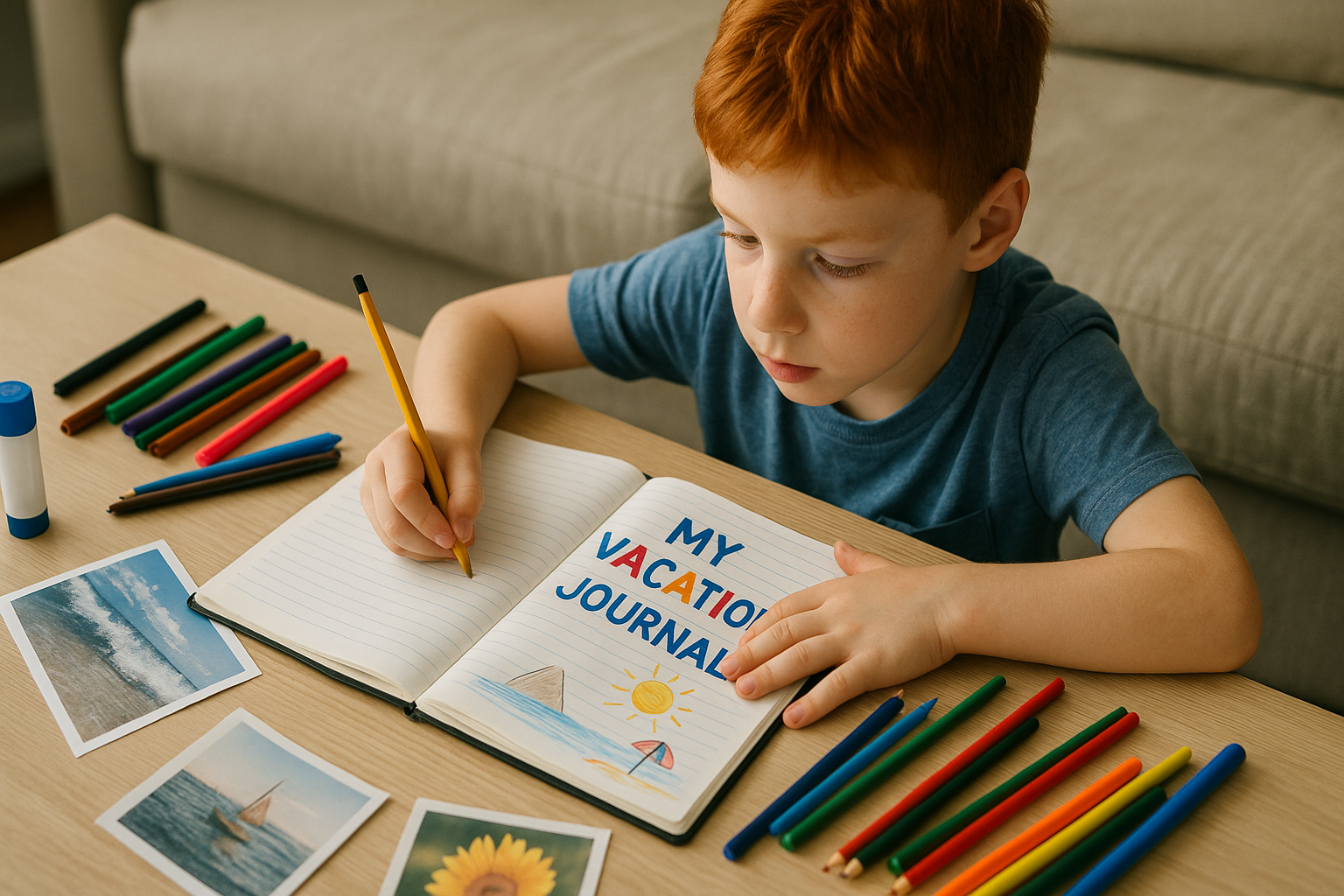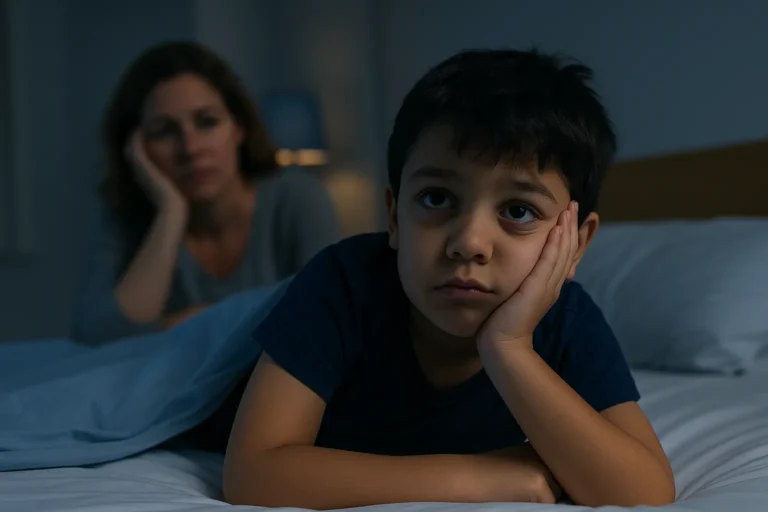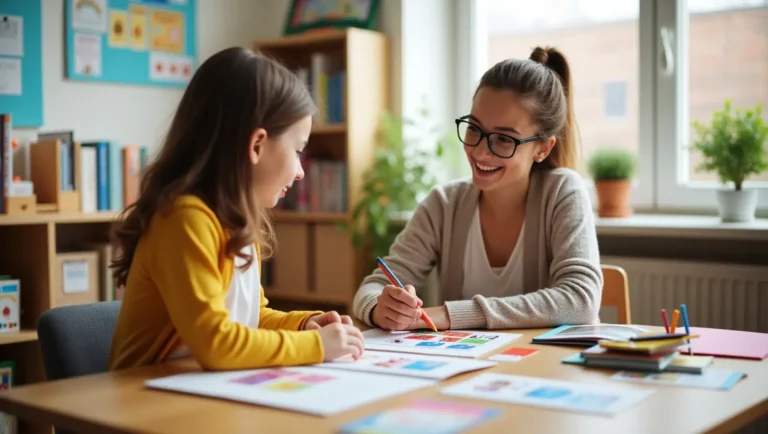ADHD Vacation Journal: Complete Guide for Parents and Children
Table of Contents
Creating an ADHD vacation journal is far more than a simple creative activity—it’s a powerful therapeutic tool that transforms school holidays into opportunities for personal growth and emotional development. For children with Attention Deficit Hyperactivity Disorder (ADHD), maintaining structure during vacation periods can be challenging, but a well-designed vacation journal provides the perfect solution.
This comprehensive guide will walk you through everything you need to know about implementing an ADHD-friendly vacation journal, from understanding its benefits to creating engaging templates that work specifically for children with attention challenges.
Understanding ADHD and Vacation Challenges
The Summer Slide Effect on ADHD Children
Children with ADHD face unique challenges during vacation periods. The absence of school structure can lead to what experts call the “summer slide”—a regression in academic skills and behavioral management. According to the American Academy of Pediatrics, children with ADHD are particularly susceptible to losing the gains they’ve made during the school year when structured routines disappear.
Executive Function Challenges During Breaks
Executive functions—the mental skills that help us plan, focus, and manage multiple tasks—are often impaired in children with ADHD. During vacations, these challenges become more pronounced without the external structure of school schedules. The CDC’s ADHD research shows that maintaining consistent routines is crucial for children with attention disorders.
Emotional Regulation and Unstructured Time
Unstructured vacation time can be overwhelming for ADHD children, leading to increased emotional dysregulation, meltdowns, and behavioral challenges. The National Institute of Mental Health emphasizes the importance of providing structure and predictability for children with ADHD, even during leisure time.
Why Choose an ADHD Vacation Journal?
Cognitive Benefits of Journaling for ADHD
Research published in the Journal of Attention Disorders demonstrates that structured writing activities can significantly improve attention span and focus in children with ADHD. The act of putting thoughts on paper engages multiple cognitive processes simultaneously, helping to strengthen neural pathways associated with attention and executive function.
Therapeutic Value of Expressive Writing
Expressive writing has been shown to reduce anxiety and improve emotional regulation in children with ADHD. The American Psychological Association has documented numerous studies showing how journaling can serve as a form of cognitive behavioral therapy, helping children process emotions and develop coping strategies.
Building Self-Awareness and Metacognition
An ADHD vacation journal helps children develop metacognitive skills—the ability to think about their own thinking. This self-awareness is crucial for children with ADHD, as it helps them recognize patterns in their behavior, emotions, and attention levels.
Scientific Evidence Supporting ADHD Journaling
Research on Writing Interventions for ADHD
A comprehensive study published in the Journal of School Psychology found that children with ADHD who engaged in regular structured writing activities showed significant improvements in:
- Attention span and sustained focus
- Working memory capacity
- Emotional regulation skills
- Self-esteem and confidence levels
Neuroplasticity and Habit Formation
The Harvard Medical School research on neuroplasticity shows that consistent daily activities like journaling can actually rewire the brain, creating new neural pathways that support better attention and executive function in children with ADHD.
Long-term Benefits of Structured Activities
Longitudinal studies from Johns Hopkins Medicine demonstrate that children with ADHD who maintain structured activities during vacation periods show less regression in academic and behavioral skills when returning to school.
Creating Your ADHD Vacation Journal: Step-by-Step Guide
Phase 1: Planning and Preparation
Before starting your ADHD vacation journal project, proper planning is essential. The Children and Adults with Attention-Deficit/Hyperactivity Disorder (CHADD) organization recommends involving your child in the planning process to increase buy-in and engagement.
Pre-planning checklist:
- Assess your child’s current attention span and writing abilities
- Identify their interests and preferred activities
- Gather necessary materials and supplies
- Set realistic expectations and goals
- Create a dedicated workspace for journaling
Phase 2: Selecting the Perfect Journal Format
The physical format of your ADHD vacation journal can significantly impact your child’s engagement and success. Consider these evidence-based options:
Traditional Paper Journals: Research from Occupational Therapy International shows that the tactile experience of writing by hand activates different brain regions than typing, potentially enhancing memory and attention in children with ADHD.
Digital Alternatives: For tech-savvy children, digital journaling apps can provide additional structure and engagement. The International Society for Technology in Education has identified several ADHD-friendly digital tools that can enhance the journaling experience.
Hybrid Approaches: Combining traditional writing with digital elements (photos, voice recordings, etc.) can create a more engaging experience for children with ADHD who thrive on variety and stimulation.
Phase 3: Designing ADHD-Friendly Templates
Creating structured templates is crucial for children with ADHD, as blank pages can be overwhelming and paralyzing. The International Association of ADHD Coaches recommends using visual elements and clear prompts to guide children through the journaling process.
Essential template elements:
- Visual mood indicators (emoji faces, weather symbols)
- Structured question prompts with multiple choice options
- Dedicated spaces for drawings and creative expression
- Achievement tracking sections for positive reinforcement
- Reflection prompts appropriate for developmental level
Detailed ADHD Vacation Journal Template
Daily Entry Template for Ages 6-12
📅 Date: _____________
🌤️ My Mood Weather Report: ☀️ Sunny (Happy) ⛅ Partly Cloudy (Okay) ⛈️ Stormy (Upset) 🌈 Rainbow (Excited)
⏰ My Day’s Timeline:
- Morning Activity: ___________________________
- Afternoon Adventure: _______________________
- Evening Fun: _______________________________
🎯 Today’s Wins (check all that apply): □ I listened well to instructions □ I helped someone without being asked □ I stayed calm when frustrated □ I completed a task without reminders □ I used my words instead of actions □ I tried something new
💭 My Thoughts and Feelings: The best part of my day was: _______________________ Something that was hard for me: ___________________ I felt proud when: ________________________________
🎨 My Day in Pictures: [Space for drawing, photos, or stickers]
🌟 Tomorrow I Want To:
📝 Parent/Caregiver Notes: [Space for adult observations and encouragement]
Advanced Template for Ages 13-18
This template incorporates more sophisticated emotional regulation concepts and executive function skills appropriate for adolescents with ADHD.
🔍 Self-Assessment Section:
- Attention Level Today: 1-10 scale with reflection
- Energy Management: How did I handle my energy levels?
- Social Interactions: Quality of relationships and communication
- Goal Progress: Steps taken toward personal objectives
💡 Problem-Solving Corner:
- Challenge Faced: What difficulty did I encounter?
- Strategy Used: How did I attempt to solve it?
- Outcome: What was the result?
- Learning: What would I do differently next time?
Implementing Your ADHD Vacation Journal Routine
Establishing Consistent Habits
The American Academy of Child & Adolescent Psychiatry emphasizes that consistency is key when working with children who have ADHD. Establishing a regular journaling routine helps create the structure these children need to thrive.
Optimal timing strategies:
- Morning journaling for intention-setting and day planning
- Evening reflection for processing experiences and emotions
- Transition times between activities to maintain focus
- Flexible scheduling to accommodate ADHD attention patterns
Creating a Supportive Environment
The physical environment where your child engages with their ADHD vacation journal can significantly impact their success. Research from the Environmental Psychology Journal shows that organized, calm spaces improve focus and reduce distractibility in children with ADHD.
Environmental considerations:
- Minimize distractions (noise, visual clutter, interruptions)
- Ensure comfortable seating and appropriate lighting
- Organize supplies in accessible, consistent locations
- Create visual cues and reminders for the journaling routine
Motivation and Engagement Strategies
Maintaining motivation can be challenging for children with ADHD, who may struggle with task persistence and delayed gratification. The Attention Deficit Disorder Association recommends using immediate reinforcement and intrinsic motivation strategies.
Engagement techniques:
- Celebrate small wins and progress milestones
- Provide choices in topics, formats, and activities
- Incorporate interests and special passions
- Use visual progress tracking and reward systems
- Share entries with supportive family members
Addressing Common ADHD Journaling Challenges
Overcoming Resistance and Avoidance
It’s common for children with ADHD to initially resist journaling, especially if they’ve had negative experiences with writing in the past. The Learning Disabilities Association of America provides strategies for overcoming these challenges.
Resistance-reduction strategies:
- Start small with just 5-10 minutes daily
- Focus on fun rather than perfection
- Allow alternative formats (drawing, voice recording, photos)
- Model the behavior by keeping your own journal
- Address underlying concerns about writing or expression
Managing Attention and Focus Issues
Children with ADHD may struggle to maintain focus during journaling sessions. The National Center for Learning Disabilities offers evidence-based strategies for supporting sustained attention.
Focus-enhancement techniques:
- Break tasks into smaller chunks with frequent breaks
- Use timers to create structure and urgency
- Provide fidget tools or background music if helpful
- Allow movement during thinking or brainstorming
- Adjust expectations based on daily attention levels
Dealing with Perfectionism and Overwhelm
Some children with ADHD may become overwhelmed by the perceived pressure to create “perfect” journal entries. The Anxiety and Depression Association of America provides guidance on managing perfectionism in children.
Overwhelm-prevention strategies:
- Emphasize process over product in all interactions
- Normalize mistakes and imperfect entries
- Provide multiple formats and options for expression
- Set realistic expectations based on individual capabilities
- Celebrate effort and participation over outcomes
Advanced ADHD Journaling Techniques
Incorporating Mindfulness and Meditation
Research from Mindfulness in Schools Project shows that combining journaling with mindfulness practices can significantly improve attention and emotional regulation in children with ADHD.
Mindfulness integration strategies:
- Begin with breathing exercises before writing
- Include gratitude practices in daily entries
- Use body awareness check-ins throughout the day
- Practice mindful observation of surroundings and emotions
- End with intention-setting for the following day
Visual and Creative Expression
Many children with ADHD are visual learners who benefit from incorporating artistic elements into their journaling practice. The International Expressive Arts Therapy Association provides research supporting multimodal approaches.
Creative expression options:
- Mind mapping for complex thoughts and ideas
- Photo journaling to capture moments and memories
- Collage creation using magazines and printed materials
- Comic strip formats for storytelling and narrative
- Color coding for emotions, activities, and themes
Technology Integration
For children who are comfortable with technology, incorporating digital tools can enhance engagement and provide additional structure. The EdTech Hub offers reviews of ADHD-friendly applications and tools.
Recommended digital tools:
- Voice-to-text apps for children who struggle with writing
- Photo editing software for creative expression
- Mood tracking applications with visual interfaces
- Calendar integration for routine and structure
- Backup systems to prevent loss of work
Measuring Success and Progress
Tracking Behavioral Improvements
One of the most valuable aspects of an ADHD vacation journal is its ability to help parents and children track progress over time. The Behavior Analyst Certification Board recommends using objective measures to assess improvement.
Progress indicators to monitor:
- Attention span during journaling sessions
- Emotional regulation during challenging situations
- Self-awareness and metacognitive skills
- Independence in completing journal entries
- Positive self-talk and confidence levels
Academic and Social Benefits
Research from the Council for Exceptional Children shows that children who maintain structured activities during vacation periods demonstrate better academic performance and social skills when returning to school.
Long-term benefits to assess:
- Writing skills and creative expression
- Organizational abilities and time management
- Social interaction quality and frequency
- Problem-solving skills and resilience
- Self-advocacy and communication skills
Creating Progress Portfolios
Maintaining a progress portfolio alongside the vacation journal can provide valuable insights into your child’s development and growth. This portfolio can include:
Portfolio components:
- Sample journal entries from different time periods
- Behavioral tracking sheets and observation notes
- Photos or videos of your child engaging in journaling
- Feedback forms from other family members or caregivers
- Goal-setting worksheets and achievement records
Transitioning Back to School
Maintaining Momentum
As vacation ends and school begins, it’s important to maintain the positive habits and coping strategies developed through journaling. The School Mental Health Alliance provides guidance on maintaining therapeutic practices during academic periods.
Transition strategies:
- Adapt the journal format for school-year schedules
- Share insights with teachers and school counselors
- Continue abbreviated versions during busy periods
- Use journaling skills for academic assignments
- Maintain the therapeutic relationship with writing
Communicating with Educators
Your child’s ADHD vacation journal can provide valuable insights for teachers and school professionals. The National Association of School Psychologists recommends sharing relevant information to support classroom success.
Information to share:
- Successful strategies and techniques discovered
- Environmental preferences and optimal conditions
- Emotional regulation tools and coping mechanisms
- Attention patterns and focus capabilities
- Motivation techniques that proved effective
Expert Resources and Professional Support
ADHD Organizations and Advocacy Groups
- CHADD (Children and Adults with ADHD) – Comprehensive resources and support
- ADDitude Magazine – Practical tips and expert advice
- ADHD Awareness Month – Educational campaigns and resources
- Understood.org – Learning and attention issues support
Professional Development Resources
- American Professional Society of ADHD – Clinical research and guidelines
- International Association of ADHD Coaches – Coaching certification and training
- National Resource Center on ADHD – Evidence-based information
Research and Academic Sources
- Journal of Attention Disorders – Peer-reviewed research
- ADHD Research Studies – Current research opportunities
- Cochrane Reviews on ADHD – Systematic reviews and meta-analyses
Conclusion
Creating an ADHD vacation journal represents a powerful intersection of therapeutic intervention, creative expression, and skill development. This comprehensive approach addresses the unique challenges faced by children with ADHD while building essential life skills that extend far beyond the vacation period.
The evidence is clear: structured, engaging activities like journaling can significantly improve attention, emotional regulation, and self-awareness in children with ADHD. By implementing the strategies, templates, and techniques outlined in this guide, you’re providing your child with tools that will serve them throughout their life.
Remember that every child with ADHD is unique, and what works for one may not work for another. Be patient, flexible, and willing to adapt your approach based on your child’s individual needs and preferences. The journey of creating an ADHD vacation journal is just as important as the destination—embrace the process, celebrate small victories, and watch as your child develops greater confidence, self-awareness, and joy in their own unique way of experiencing the world.
Related Articles and Continued Learning
On Our Site:
- ADHD Summer Camp Activities: Ultimate Guide
- Managing ADHD Meltdowns: Parent Strategies
- ADHD School Preparation: Back-to-School Success
- Executive Function Skills for ADHD Children
- ADHD Sleep Solutions: Better Nights for Families
Partner Resources:
- ADHD Learning Strategies
- Sports and ADHD: Physical Activity Benefits
- Nutrition and ADHD: Dietary Approaches
- Technology Tools for ADHD Management
Did this article help you understand how to create an effective ADHD vacation journal? Share your experience and don’t hesitate to consult with ADHD professionals for personalized support for your child’s unique needs.





